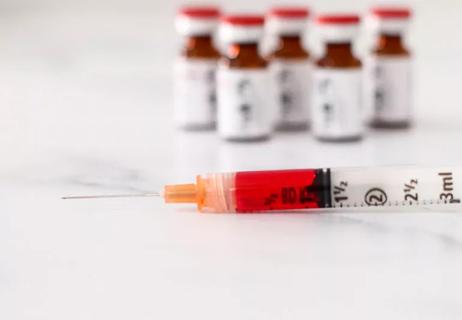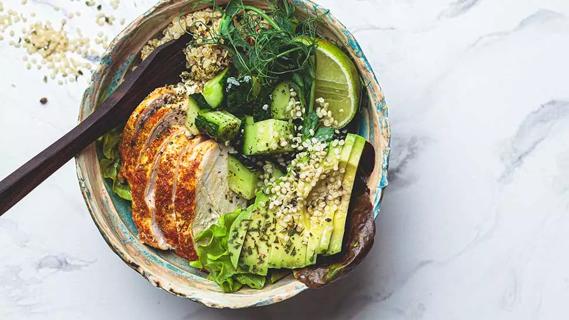Folic acid supports healthy growth and development

Vitamin B9 (folate) is an essential vitamin that helps your body form red blood cells and DNA, which are the building blocks of your body. It’s especially important for healthy growth and development during pregnancy.
Advertisement
Cleveland Clinic is a non-profit academic medical center. Advertising on our site helps support our mission. We do not endorse non-Cleveland Clinic products or services. Policy
A wide range of foods contains folate or added (fortified) folic acid, but it can still be hard to get adequate B9. Folate deficiency, which is fairly common, can lead to serious complications like birth defects and anemia. In some cases, your healthcare provider may recommend a nutritional supplement.
“Vitamin B9 levels can be difficult to maintain, so it’s important to know what foods you can turn to for to better meet your needs,” says dietitian Julia Zumpano, RD, LD. “And if you’re pregnant, folic acid supplements are always necessary for the health and wellbeing of the fetus.”
Vitamin B9 is one of eight B (B-complex) vitamins that help your body change food (carbohydrates) into fuel (glucose) to produce energy. You need B9 for the health of your liver, skin, hair and eyes, and to keep your nervous system working properly.
This essential nutrient is water-soluble (meaning it dissolves in water). It breaks down quickly in your body, and any excess leaves in your urine or stool.
The good news is, this means it’s less likely to reach toxic (dangerous) levels in your body. (But do be aware that it’s possible to consume too much folic acid, which can be harmful to your body over time.)
Advertisement
The bad news is, this can make it harder for you to maintain enough B9 in your body, and meet the recommended daily amount without taking supplements.
Zumpano reassures, “Upping your consumption is possible if you know what to look for, and can be easier than you expect.”
The terms folate and folic acid are often used interchangeably, but are actually different forms of vitamin B9. The three main types are:
Vitamin B9 helps your body make healthy new cells, supporting many of its functions, and may help prevent health issues from developing. It’s proven critical for reproductive health, too.
“It’s essential for people who are pregnant to take folic acid supplements to support healthy fetal growth and development,” notes Zumpano. “When you’re trying to conceive or are pregnant, it’s extremely difficult to get the amount of vitamin B9 needed.”
Studies show that people who take folic acid supplements before conception and during the first trimester of pregnancy may reduce their risk of having children with neural tube defects (birth defects of the brain and spine such as spina bifida) by 40% to 80%. Early evidence suggests folic acid may also be associated with a lower risk of autism, severe language delays and emotional issues.
Other research hints at even broader vitamin B9 benefits, from preventing or treating depression and memory loss to high blood pressure and cardiovascular disease. But more studies are needed to confirm these connections. For example, B9 may:
Healthcare providers may prescribe B9 to lower high blood levels of homocysteine, a chemical that builds proteins (amino acids) that can harden your arteries. Both high and low levels of homocysteine (compared with moderate levels) have been associated with an increased risk of death from cardiovascular disease. But the exact link between folic acid and heart disease remains unclear.
Taking folic acid supplements may improve memory and thinking skills in older adults who experience faster-than-normal decline. One study also suggested a possible link between folate deficiency and an increased risk of Alzheimer’s disease.
Advertisement
Nonalcoholic steatohepatitis(NASH), an aggressive form of fatty liver disease, can cause severe liver damage. A recent study found that eating a combination of foods containing B12 and folic acid slowed disease progression and reversed liver fibrosis (thickening of scar tissue) and swelling (inflammation).
One study suggests folic acid supplements may help slow age-related hearing loss in older adults with low folate in their diet and high homocysteine levels.
The exact connection between folic acid and AMD, a condition that can cause vision loss, is unclear. But one large study found that women who took daily supplements of folic acid and vitamins B6 and B12 had a reduced risk of developing this eye disease.
Folate occurs naturally in a wide variety of foods that you can add to your daily diet. These include:
Advertisement
The U.S. Department of Agriculture (USDA) requires that folic acid be added to certain foods when they’re made. Foods fortified with folic acid include:
On nutrition labels, folate is shown as mcg (micrograms) of dietary folate equivalents (DFE), with folic acid (also in mcg) in parentheses below it. Your recommended vitamin B9 intake is:
| Age | Recommended Daily Amount |
|---|---|
| 6 to 11 months* | 80 mcg |
| 1 to 3 years | 150 mcg |
| 4 to 18 years | 200–400 mcg |
| Over 18 years | 400 mcg |
| 14+ years and pregnant | 600 mcg |
| 14+ years and lactating | 500 mcg |
| Age | |
| 6 to 11 months* | |
| Recommended Daily Amount | |
| 80 mcg | |
| 1 to 3 years | |
| Recommended Daily Amount | |
| 150 mcg | |
| 4 to 18 years | |
| Recommended Daily Amount | |
| 200–400 mcg | |
| Over 18 years | |
| Recommended Daily Amount | |
| 400 mcg | |
| 14+ years and pregnant | |
| Recommended Daily Amount | |
| 600 mcg | |
| 14+ years and lactating | |
| Recommended Daily Amount | |
| 500 mcg |
*Adequate intake
Source: 2020-2025 Dietary Guidelines for Americans
Most multivitamin or mineral supplements contain folic acid, especially prenatal vitamins for people who are pregnant or planning to conceive.
You don’t need to take supplements if you’re getting enough of what you need from food. But if you suspect you may lack vitamin B9, talk with a healthcare provider. A blood test can typically confirm if you have a deficiency.
“Vitamin B9, in all its forms, is important to maintain your health, and keep your body working well,” says Zumpano. “And with a little effort, you can get enough of it from the foods you’re used to eating and new foods that can be interesting and fun to explore.”
Advertisement
Learn more about our editorial process.
Advertisement

Though it was once used as a cholesterol-lowering medication, niacin is no longer a recommended treatment

Some protein-containing foods are known to be good sources of biotin — but there are also likely other foods that just haven’t been studied yet

This essential nutrient helps convert food into energy, but don’t expect wonders for your nails and hair

This important B vitamin has benefits for your heart, brain and skin

Taking supplements with biotin can cause inaccurate lab test results

If you have low B12 or a true deficiency, these shots can work wonders

Getting enough thiamine in your diet can protect your heart, brain and nervous system

Also known as pantothenic acid, vitamin B5 helps your metabolism and is found in a wide range of foods

If you’re feeling short of breath, sleep can be tough — propping yourself up or sleeping on your side may help

If you fear the unknown or find yourself needing reassurance often, you may identify with this attachment style

If you’re looking to boost your gut health, it’s better to get fiber from whole foods